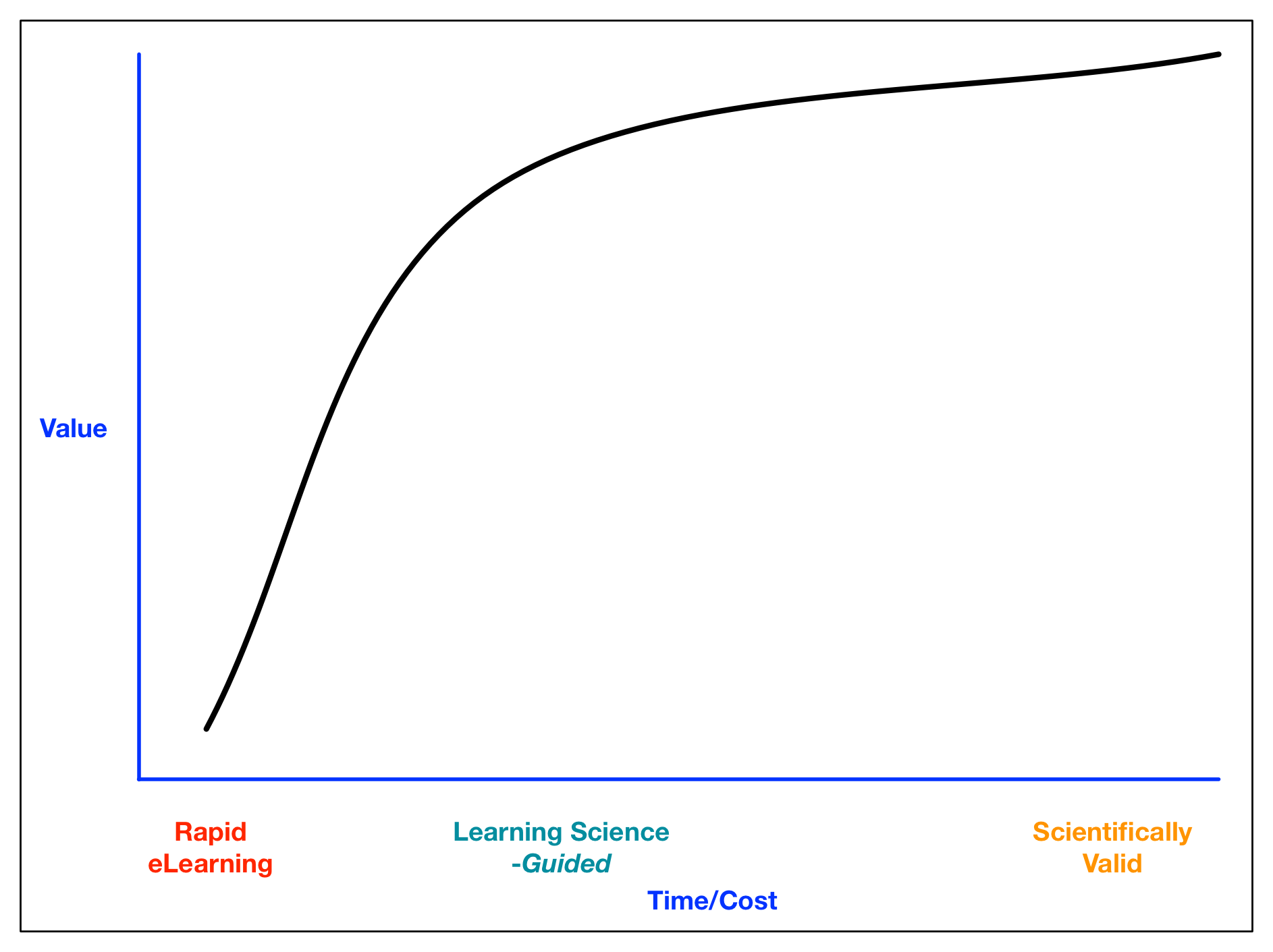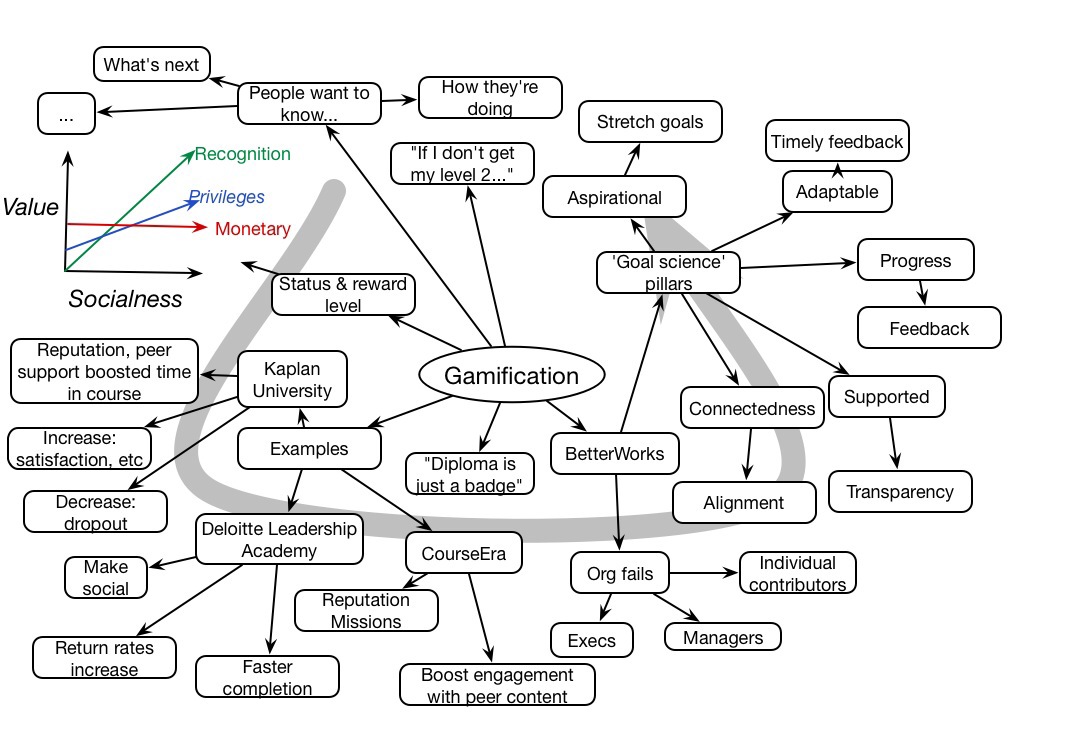I tout the value of learning science and good design. And yet, I also recognize that to do it to the full extent is beyond most people’s abilities. In my own work, I’m not resourced to do it the way I would and should do it. So how can we strike a balance? I believe that we need to use smart heuristics instead of the full process.
I have been talking to a few different people recently who basically are resourced to do it the right way. They talk about getting the right SMEs (e.g. with sufficient depth to develop models), using a cognitive task analysis process to get the objectives, align the processing activities to the type of learning objective, developing appropriate materials and rich simulations, testing the learning and using feedback to refine the product, all before final release. That’s great, and I laud them. Unfortunately, the cost to get a team capable of doing this, and the time schedule to do it right, doesn’t fit in the situation I’m usually in (nor most of you). To be fair, if it really matters (e.g. lives depend on it or you’re going to sell it), you really do need to do this (as medical, aviation, military training usually do).
But what if you’ve a team that’s not composed of PhDs in the learning sciences, your development resources are tied to the usual tools, your budgets far more stringent, and schedules are likewise constrained? Do you have to abandon hope? My claim is no.
 I believe that a smart, heuristic approach is plausible. Using the typical ‘law of diminishing returns’ curve (and the shape of this curve is open to debate), I suggest that it’s plausible that there is a sweet spot of design processes that gives you an high amount of value for a pragmatic investment of time and resources. Conceptually, I believe you can get good outcomes with some steps that tap into the core of learning science without following the letter. Learning is a probabilistic game, overall, so we’re taking a small tradeoff in probability to meet real world constraints.
I believe that a smart, heuristic approach is plausible. Using the typical ‘law of diminishing returns’ curve (and the shape of this curve is open to debate), I suggest that it’s plausible that there is a sweet spot of design processes that gives you an high amount of value for a pragmatic investment of time and resources. Conceptually, I believe you can get good outcomes with some steps that tap into the core of learning science without following the letter. Learning is a probabilistic game, overall, so we’re taking a small tradeoff in probability to meet real world constraints.
What are these steps? Instead of doing a full cognitive task analysis, we’ll do our best guess of meaningful activities before getting feedback from the SME. We’ll switch the emphasis from knowledge test to mini- and branching-scenarios for practice tasks, or we’ll have them take information resources and use them to generate work products (charts, tables, analyses) as processing. We’ll try to anticipate the models, and ask for misconceptions & stories to build in. And we’ll align pre-, in-, and post-class activities in a pragmatic way. Finally, we’ll do a learning equivalent of heuristic evaluation, not do a full scientifically valid test, but we’ll run it by the SMEs and fix their (legitimate) complaints, then run it with some students and fix the observed flaws.
In short, what we’re doing here are approximations to the full process that includes some smart guesses instead of full validation. There’s not the expectation that the outcome will be as good as we’d like, but it’s going to be a lot better than throwing quizzes on content. And we can do it with a smart team that aren’t learning scientists but are informed, in a longer but still reasonable schedule.
I believe we can create transformative learning under real world constraints. At least, I’ll claim this approach is far more justifiable than the too oft-seen approach of info dump and knowledge test. What say you?
